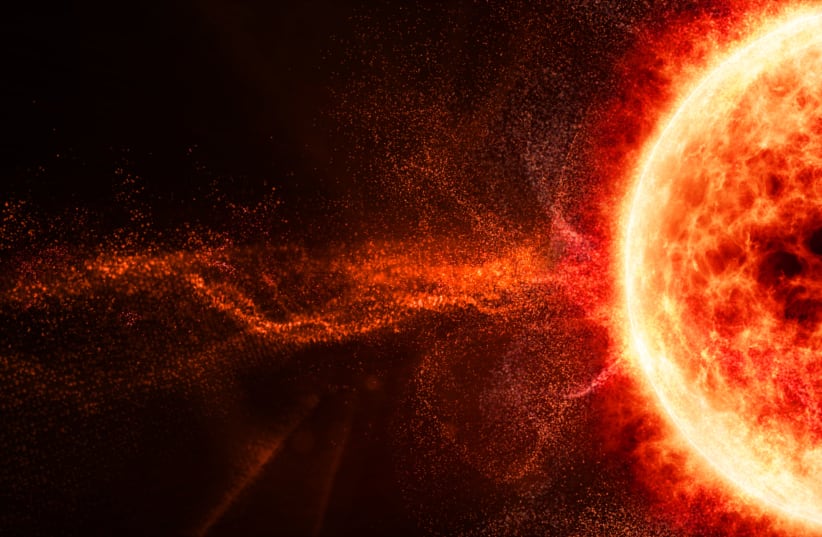Everything you need to know in 50 words
This article delves into solar flares, explaining their nature, effects on Earth, and practical strategies to mitigate risks. It provides essential knowledge for anyone seeking to understand and prepare for the impact of these powerful solar phenomena.
Introduction
In a world increasingly dependent on technology, understanding the complexities of solar flares is not just scientific curiosity—it's a necessity. Solar flares, those magnificent eruptions on the Sun's surface, hold the power to disrupt our daily lives.
The Science of Solar Flares
A solar flare is a sudden flash of increased brightness on the Sun, often accompanied by a coronal mass ejection (CME). These flares are caused by the release of magnetic energy stored in the Sun’s atmosphere.
Understanding the Types and Classes of Solar Flares
Solar flares are classified based on their strength: X-class (most intense), M-class (moderate), and C-class (least intense). The classification is crucial for anticipating potential impacts on Earth.
The Earthly Impact of Solar Flares
Solar flares can affect Earth in numerous ways. The most significant impact is on our planet's magnetosphere, which can disrupt satellite operations, navigation systems, and even power grids.
Preparing for Geomagnetic Storms
Geomagnetic storms, induced by solar flares, can impact electrical systems on Earth. Preparing for these events involves understanding the vulnerability of our infrastructure and implementing protective measures.
Solar Flares and Communication Systems
One of the most immediate effects of solar flares is on communication systems, particularly those relying on satellite-based technology. Understanding how solar flares affect these systems is key to developing resilience strategies.
Strategies to Protect Satellite Operations
Satellites are particularly vulnerable to solar flares. Implementing hardened electronics, redundant systems, and predictive models are part of the strategies to safeguard these vital assets.
Solar Flares and Human Health
While solar flares pose minimal direct health risks to humans on Earth's surface, astronauts in space can be at risk due to increased radiation. Understanding these risks is essential for space exploration and missions.
Protecting Astronauts from Solar Radiation
Space agencies like NASA employ various strategies to protect astronauts from solar radiation, including radiation shelters and predictive models to avoid spacewalks during solar flare events.
The Role of Solar Observatories in Predicting Flares
Solar observatories play a crucial role in monitoring the Sun's activity and predicting solar flares. This information is crucial for preparing and mitigating the effects of solar flares.
Advancements in Solar Observation Technology
Recent advancements in solar observation technology have enhanced our ability to predict solar flares and their potential impacts, allowing for more effective preparedness strategies.
Solar Flares and Climate Change
While solar flares have a minimal direct impact on climate change, understanding their role in the broader context of solar activity and climate is essential.
The Sun's Influence on Earth's Climate
The Sun's activity, including solar flares, contributes to the natural variability of Earth's climate. However, solar flares themselves do not significantly affect long-term climate patterns.
The Future of Solar Flare Research
Ongoing research and advancements in technology continue to deepen our understanding of solar flares and their impacts, promising more effective ways to prepare and protect our technology-dependent world.
Investing in Solar Research for Future Preparedness
Investment in solar research is not just about scientific exploration; it's about safeguarding our future in an increasingly technology-reliant society.
Conclusion
Solar flares, with their awe-inspiring power, remind us of our place in the cosmos. Understanding and preparing for their impacts is not only about protecting our technology but also about respecting and adapting to the natural forces that shape our universe.
Q&A Section
Q1: What exactly is a solar flare and how does it occur?
A1: A solar flare is a sudden eruption of energy on the Sun's surface, caused by the release of magnetic energy stored in the solar atmosphere. It results from the complex interplay of the Sun's magnetic fields.
Q2: How can solar flares affect Earth's power grids?
A2: Solar flares can induce geomagnetic storms that affect Earth's magnetosphere, potentially causing fluctuations in power grids and leading to widespread power outages.
Q3: What measures can be taken to protect satellites from solar flares?
A3: Protecting satellites involves using hardened electronics, creating redundant systems, and employing predictive models to anticipate and mitigate the effects of solar flares.
Q4: Are solar flares dangerous to humans on Earth?
A4: Solar flares pose minimal direct risk to humans on Earth, as our planet's atmosphere provides effective protection against solar radiation.
Q5: How do solar flares impact global communication systems?
A5: Solar flares can disrupt global communication systems, especially those reliant on satellites, by interfering with signal transmission and damaging electronic components.
Q6: What role do solar observatories play in understanding solar flares?
A6: Solar observatories monitor the Sun's activity, providing crucial data to predict solar flares and assess their potential impact on Earth.
Q7: Can we predict solar flares accurately?
A7: While prediction methods have improved, accurately predicting the timing and magnitude of solar flares remains challenging due to the complexity of the Sun's magnetic activities.
Q8: How do solar flares affect astronauts in space?
A8: Astronauts in space are at increased risk during solar flares due to higher levels of solar radiation. Protective measures include radiation shelters and avoiding spacewalks during flare events.
Q9: Is there a connection between solar flares and climate change?
A9: Solar flares do not have a significant direct impact on climate change. However, overall solar activity, including flares, contributes to the natural variability of Earth's climate.
Q10: What advancements in technology are helping us understand solar flares better?
A10: Advances in solar observation technologies, including more sensitive detectors and improved predictive models, are enhancing our understanding of solar flares and their potential impacts.

